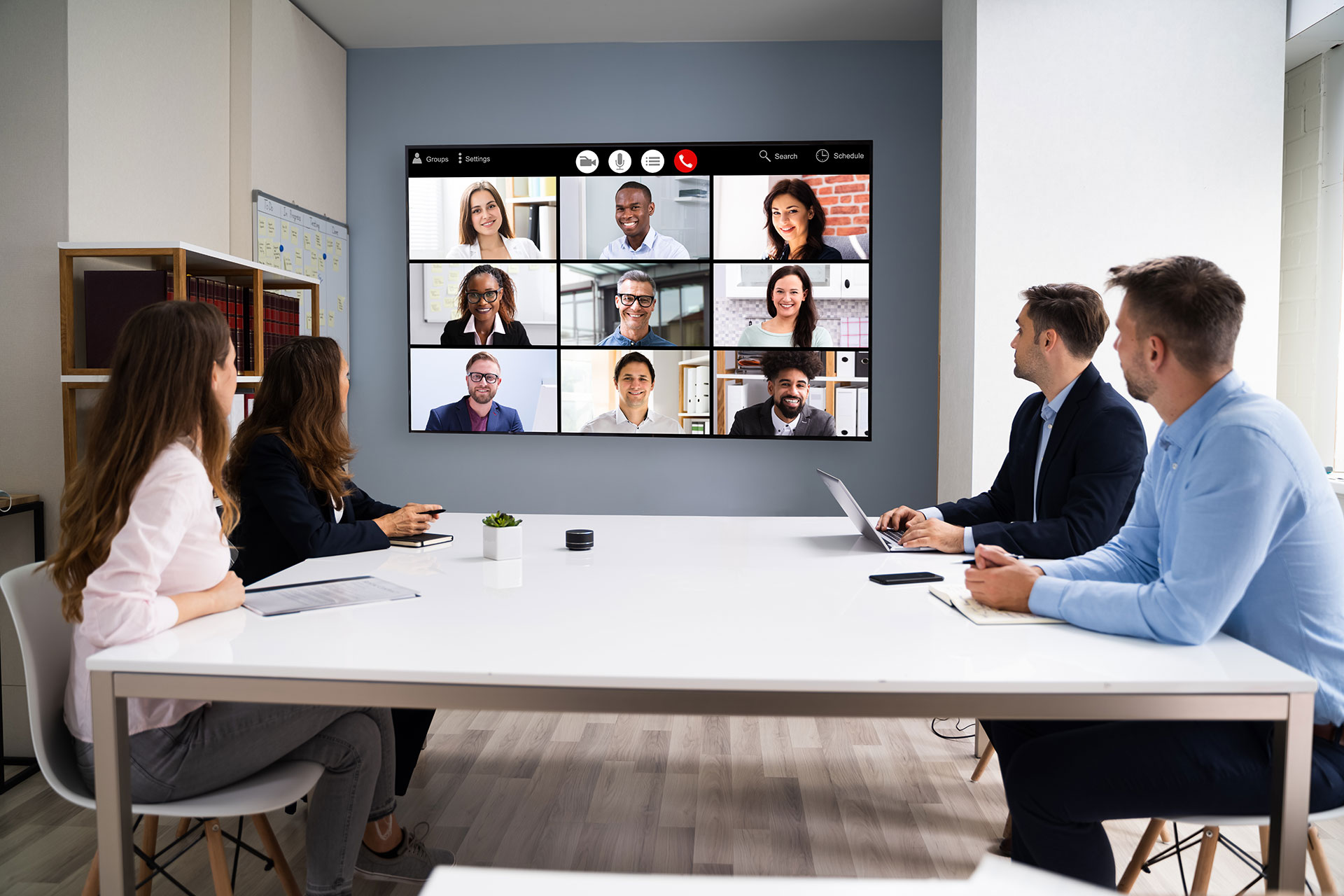The Evolution of the Hybrid Workplace
What Is the Hybrid Work Model?
The hybrid workplace balances working from the office (WFO) and working from home (WFH). Popularized through the pandemic, the hybrid work model is highly flexible and desired by many employees. According to a recent SHRM report, 61% of employees surveyed expect to spend half their time in the office by July 2021—and the other half working remotely.
Many business leaders, having experienced the success of remote work during the pandemic, are evolving their workplace strategies to include hybrid working. In fact, according to Forbes, 72% of business leaders expect a hybrid model of working.
Will the virtual work arrangements you implemented during the pandemic factor into your long-term workplace strategy?

Ways to Improve Your Hybrid Workplace
The office is an integral part of your company’s culture. Over 87% of employees in PwC’s survey said team collaboration and building relationships were the top reasons for being onsite. One of the best ways to build company culture is to innovate your workplace so that your employees feel safe and confident returning to the office.
Boost employee confidence returning to the workplace with these eight improvements:
- Improve Indoor Air Quality: Outfit your HVAC system with air-filtration tech, UV lighting, or bipolar ionization.
- Rethink Floor Plans and Flowcharts: Provide socially distant desk spacing in workstations or cubicle pods. Rethink seating charts.
- Install New Technologies: Install touchless features in bathrooms and shared spaces, desk hotelling software, and mobile hotspots.
- Introduce Agile Workplace Designs: Create “zones” for people to accomplish different types of work: brainstorm, regenerate, concentrate.
- De-Densify Shared Spaces: Divide shared spaces with furniture: pod chairs, private booths, or phone booths. Add open shelving and other creative room dividers.
- Add Outdoor Work Areas: Allow employees to take their work outside, provided employees have company laptops.
- Connect Better Virtually: Design video conferencing stations to improve the quality of video calls as not everyone will be in the office at once.
- Design Laptop Centric Offices: Supply laptops with docking stations for fast setup of monitors, keyboards, and mouses—and ultimate flexibility.
Formcraft’s Design-Build Expertise
Looking to improve indoor air quality in your office? Or redesign your space to ensure your office layout is conducive to the hybrid model? Formcraft’s in-house design and construction team can build safety features into your new or existing floor plans such as HVAC system updates, air filtration improvements, divisible floorplans, agiles zones and more. Read more about Formcraft Construction.
Ways to Involve Your Hybrid Workforce
If you’re evolving your office into a hybrid workplace, what better way to ensure success than to consult your employees? There are a few ways to involve your employees through surveys and workshops. But first, be sure to identify how you want your employees to use the hybrid workplace.
Defining Your Vision
As you evolve your workplace into the hybrid model, figure out what the purpose of your office will be for your workforce. Do you want it to be a productive social hub? Space for your employees to have uninterrupted focus? According to the New York Times, there are six interactions to consider that can help you define the hybrid workplace.
- Content interactions. These are interactions where your employees share feedback about tasks they’re working on. If this sounds like your company, design elements to include would be breakout spaces where employees can meet side-by-side and not distract other employees who aren’t involved in the meeting. For your virtual employees, offering Zoom, slack, Teams, and the like are great perks.
- Bounce interactions. These are interactions such as brainstorming sessions. To enable productive brainstorms, include whiteboards in multiple conference rooms and TVs that allow for telecommunications.
- Process interactions. These interactions include check-in meetings, or asking casual questions, etc. How can you make it easier for your hybrid workforce to communicate about processes?
- Social interactions. These interactions are what 87% of employees care about by going into the office. How can you make your office a social hub? Help your employees get to know each other by providing common spaces. Virtual and in-person outings are also something to consider to boost social interaction.
- Huddle interactions. These interactions are considered informal exchanges. Think water-cooler talk. If you missed out on these breaks from work during the pandemic, it will be a nice reprise when returning to work.
- Development interactions. These interactions allow for mentorship and professional feedback. One industry where these interactions are crucial is the legal industry. Read more about why Philadelphia law firms are ready to get back to the workplace.
Surveys and Workshops
Give your hybrid workforce a voice by involving them in your workplace strategy planning. Through employee-driven data, discover what makes your employees tick and what they’re looking for in their future space.
Surveying your employees is a great way to gather feedback. However, sending surveys, sifting through data, and generating a report is a lot of work for business leaders.
At Formcraft, we’ve developed WorkforceDiagnostics™ to save your leadership time and money. Our data-driven program includes a diagnostic assessment, consultations with workplace strategy experts, and recommendations for ways to evolve your hybrid workplace.